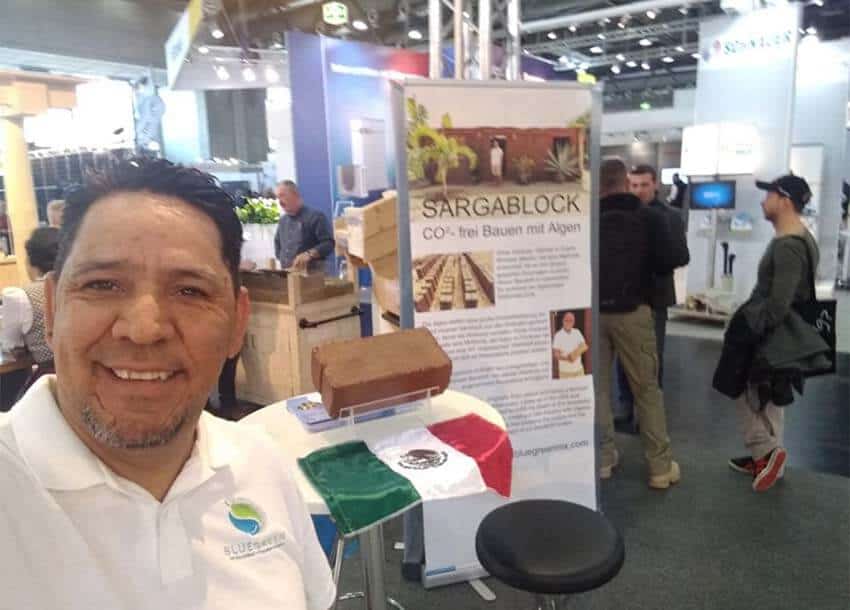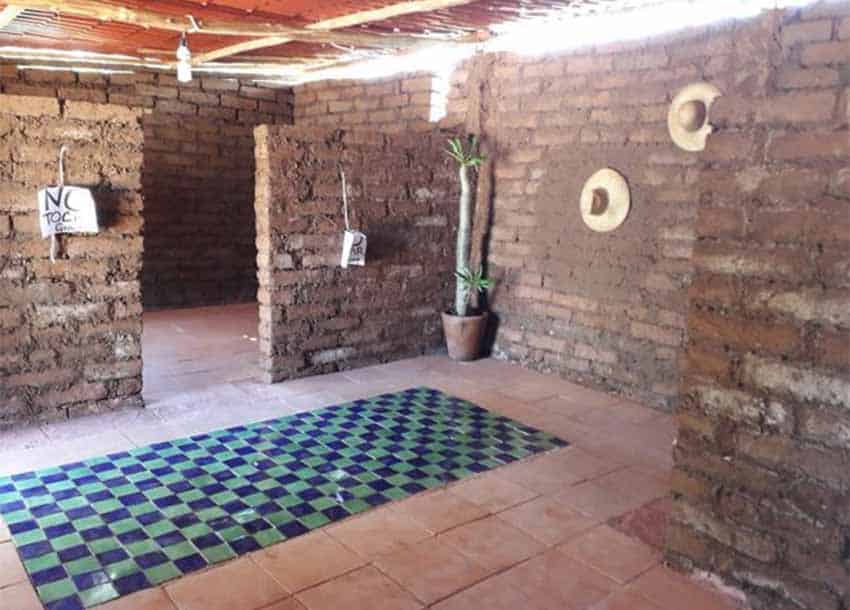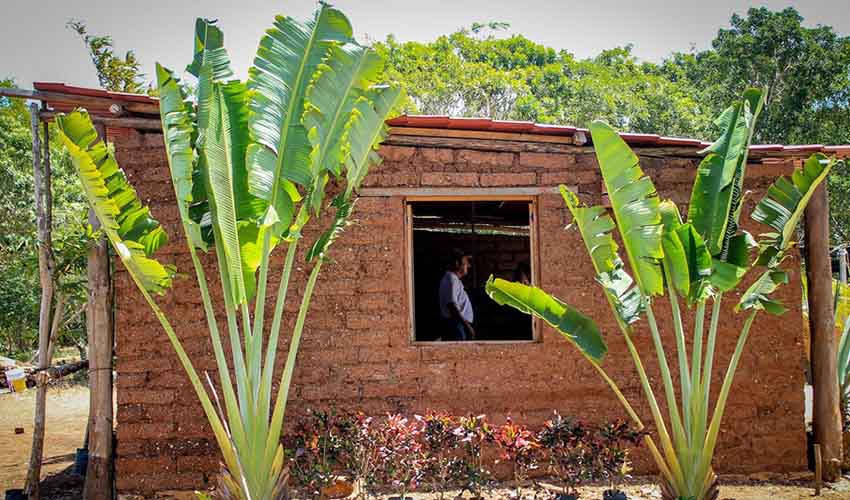A Quintana Roo man who invented a brick partially made out of sargassum has now built 13 “sargablock” homes for low-income families.
Omar Vázquez Sánchez of Puerto Morelos came up with the idea of making bricks with sargassum in 2018, when he was already selling the seaweed as a fertilizer to customers at his nursery. He completed his first sargablock building – which was modeled after his grandmother’s small home – soon after.
Vázquez, who has been dubbed Señor Sargazo or Mr. Sargassum, has come a long way since then. He now has 16 full-time employees dedicated to collecting sargassum and making bricks with it. The smelly, unsightly seaweed washes up on the famous white-sand beaches of Quintana Roo – sometimes in huge quantities – during the lengthy annual sargassum season, presenting headaches to the beach tourism industry and potential dangers to marine life and humans.
A reporter for The World public radio program recently visited Vázquez’s brickmaking operation in Puerto Morelos, a coastal town about 40 kilometers south of Cancún. The social entrepreneur explained that his bricks are made from ground sargassum, limestone and other organic material. The sargassum content of each sargablock is about 40%.

The sargassum mixture is fed into a block-making machine, which compresses and molds it into bricks measuring approximately 30 centimeters. After drying in the sun for around six hours, the sargablocks – which are considerably cheaper to make than regular bricks – are ready to be used in construction projects.
Vázquez told The World that his machine can make about 3,000 blocks a day.
“They’re very resistant. And they have this added value that no product in the world has,” he said. “We clean the beaches. We help clean up all of this sargassum, which kills fish and the reef, and we create jobs for people in need.”
Vázquez said that his first sargablock home – which he named Casa Angelita after his mother – is still intact after surviving five hurricanes and six tropical storms. Only a very small amount of water is required to make the innovative building material, he said.

The 13 homes Vázquez has built with sargablocks – each of which requires up to 20 tonnes of seaweed and some 2,000 bricks – have been donated to low-income Quintana Roo families. One of the beneficiaries is Elizabeth del Carmen López, a street vendor who took possession of her new home last December.
“It was pretty much our Christmas present,” she told The World. “The house is beautiful. It’s refreshing. Cool in the heat. And we feel safer.”
Having had his own struggles in life, Vázquez says he identifies with the people to whom he has donated houses. Along with his mother and siblings, he emigrated to the United States as a child and worked in agricultural fields instead of studying. He later worked as a landscaper in California’s wine region, but the lure of returning to his homeland remained.
“I always wanted to come back to Mexico and live my Mexican dream. Not the American dream … I wanted to come back and do something for my country,” Vázquez said in 2020.

He told The World he wants his brickmaking operation to be “one of the most important businesses in the country so that others don’t have to emigrate elsewhere, leaving their family and suffering like we did.”
With reports from The World and Tec Review
